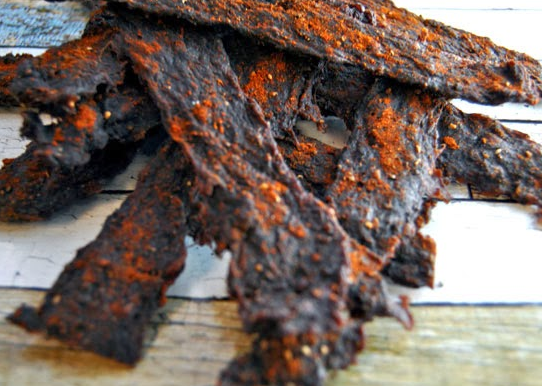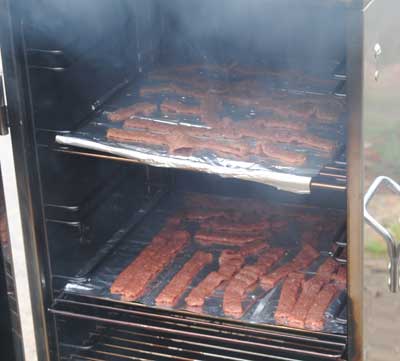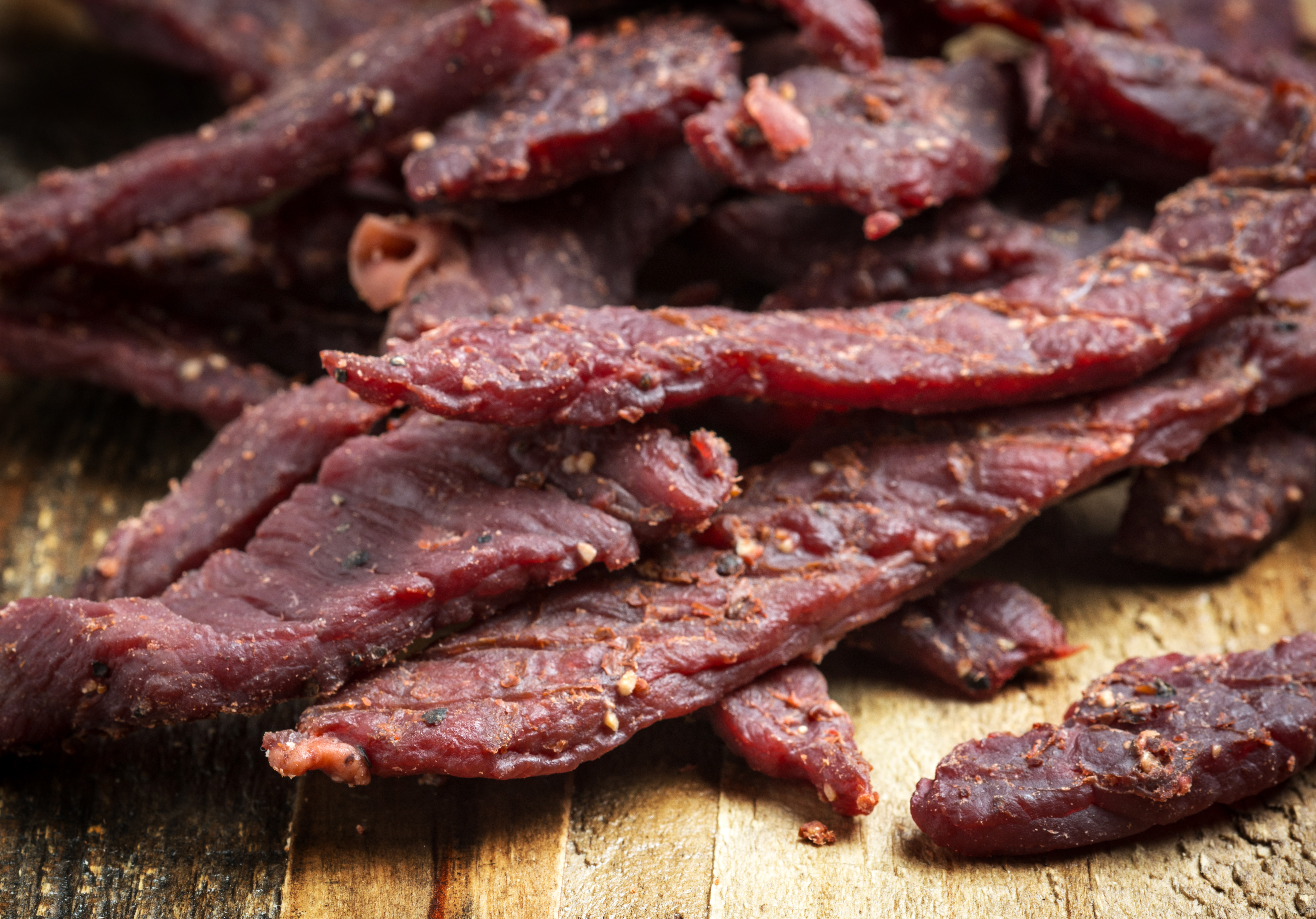It’s got many names around the world, but we call the end result jerky. Here’s the history, science, how-to and tools behind drying meat.
The art and practice of drying meat has been around since hunters have hunted, the sun has shined and fires have given off smoke. Native Americans, Africans, Incas, Scandinavians, Saxons, Franks and Mongolians just begin the list of cultures that dried both red meat and other meats. Worldwide names for their creations run a fascinating gamut; twisters such as aliya, bakkwa, charqui, kawaab, mipku, pemmican, pindang and sukuti stumble off the tongue. Here in North America we just call it jerky.
But everywhere it is made, dried meat has a similar history and the same science behind it, along with a parallel how-to process. Modern tools have made that job much easier than our hunter-ancestors had it.
The History
Travelers, hunters and explorers have always needed a reliable source of preserved protein for their adventures. Though its “shelf life” isn’t forever, dried meat lasts for weeks to months if protected from moisture. Dried meat is light to carry, retaining only 50% or so of its original volume and mass. But it is nutritious, with protein retained in the 75% range.
Dried meat wasn’t just for the road. Drying meat also offered food preservation benefits for sedentary cultures, or those that merely moved seasonally, such as the buffalo hunters of the North American plains.

No one knows exactly when humans first discovered that drying meat was a good preservation technique. Sun and air were the first tools, along with rudimentary skives that both skinned an animal and sliced the meat into strips. Most cultures developed some sort of rack system to circulate air around the meat. Somewhere along the line, smoke was introduced into the equation.
The Science
Removing moisture from meat reduces the chance for microbes and bacteria to begin decomposing the muscle. Sooner or later, if moisture creeps back in, that process will in fact begin. But properly dried meat easily lasts for a few weeks to months when stored properly (protected from moisture).
Sugar and salt enhance the curing process, particularly salt in the form of sodium nitrites that leech out moisture.
Fat is not a good component to leave on or in meat that is going to be dried, because fat is extremely moist and goes rancid easily. This makes venison almost ideal for drying, because the meat is not striated (embedded) with fat, and surface fat is easily trimmed or peeled off. Bones are also bad from a moisture perspective.
Food safety is always an important consideration. While you can make jerky out of fresh venison, freezing meat at 0 degrees F for 10 or more days kills the microbes or bacteria that might be on or in the meat. Heating dried meat to 160 degrees F is another food safety precaution.
The How-to
Pieces of meat that are both narrow and flat are best for drying. This structure maximizes the chance for completely drying meat fibers all the way through the meat. The ideal thickness for this is 1/4-inch. Slices thinner than that are hard to make; slices thicker than that are a challenge to dry completely without making the end result brittle.
Because it is stiff, partially frozen or extremely chilled meat on the verge of freezing, is ideal for slicing. For chewy or “softer” jerky, make meat slices with the grain. For more brittle jerky, make meat slices across the grain.
Marinating is recommended for meat you are going to dry. This process instills the action of sugars and salts that are necessary for helping cure the meat. A good base marinade recipe follows.
Once the meat has marinated, it is time to dry the meat with one of the tools covered — a food dehydrator, your kitchen oven or a smoker unit.
Meat Marinade
For 2 pounds of venison, combine the following ingredients:
¼ cup soy sauce
¼ cup Worcestershire sauce
1 tablespoon black pepper
1 tablespoon garlic powder
1 tablespoon onion powder
1/2 cup brown sugar
Season to taste with any other ingredients you like. Minced garlic goes great. So does rosemary or sage, or hot pepper flakes. Experiment, you really can’t go wrong!
Refrigerate meat while marinating, turning every so often to make sure all meat gets coated and the marinade gets a chance to soak in. Consider two hours as a minimum marinating window, overnight the maximum.
When removing meat from the marinade, let the excess liquid drip off and also allow the strips to air dry for a while. Sprinkling meat with additional herbs or spices for flavor is good before drying begins so the material adheres to the meat.
The Tools
Perhaps the biggest challenge of the jerky-making process is this: creating consistent ¼-inch thick slices of meat. Inconsistent thickness means thin pieces get overdried while thick ones don’t dry enough. The solution is simple: a jerky cutting board that makes every slice the same by setting a predetermined thickness and eliminating variation and human error in that endeavor.
The other key tool for the process is the drying unit you choose to use. There are three options here: a food dehydrator, your kitchen oven or smoker unit. Each has its advantages.

A food dehydrator unit can be precisely set to an ideal temperature for drying meat — 160 degrees F — and circulates air nicely, which helps the drying process and makes it consistent across the pieces.
Your kitchen oven set to 160 degrees F can do a good job of drying meat. The price is right, too: It’s right there. Drawbacks include: drippage that occurs from the meat, but a foil lining will help some; and little air circulation.
A smoker unit is perhaps ideal from these perspectives: Modern electric or propane units allow you to set the temperature precisely, the smoke helps circulate air and cure the meat, and the smoky flavor added is hard to beat.
One trick to good drying is to avoid too much heat, or too little. That 160 F range mentioned is good — enough to make the meat food-safe, but not so much as to over-dry it. Four to six hours seems to be an ideal drying-time window.
But checking the meat is the best approach to knowing when it’s ready. Drying meat has a definite element of art to go with the science. Good jerky will crack but not break. Meat strips should be stiff but not floppy. Meat that breaks is overdone.
The Storage
Well-dried jerky will last at room temperatures for three to four weeks in a sealed bag or container that has been carefully prepared to not have moisture in it; let meat cool before storing to avoid condensation in the bag or container.
In the refrigerator, well-packaged meat will last a month to eight weeks. You can also freeze tightly sealed jerky packages for three to four months; longer is not recommended, because the freezing will remove even more moisture from the meat, eliminating flavor and making it extremely brittle.
While we don’t dry meat for survival today, jerky remains a perfect food for the deer stand, duck blind, upland fields, fishing boat, hiking trail, family adventure day … or at home or work. Dry some venison soon and harken back to the hunters of old.
RECIPE: All-Purpose Grilling or Jerky Marinade (By Daniel Laughter)
Ingredients
• 3-5 pounds trimmed deer meat, sliced thinly into strips
• 1 teaspoon hoisin sauce
• 1½ cups soy sauce
• 2 cups pineapple juice
• 3 tablespoons brown sugar
• ¾ cup rice vinegar
• 3 teaspoons fresh ginger
• 4 tablespoons minced garlic
• Crushed red pepper to taste for hotness
• Tabasco sauce to taste for hotness
Directions
Combine and marinade ingredients in a large bowl. Add meat and toss to coat evenly. Cover and refrigerate for 24 to 48 hours. Place meat strips on dehydrator at 160 degrees and let cook overnight or 8 hours. Meat should be dry within 6 to 8 hours. Once complete, jerky needs to be either refrigerated or frozen.


